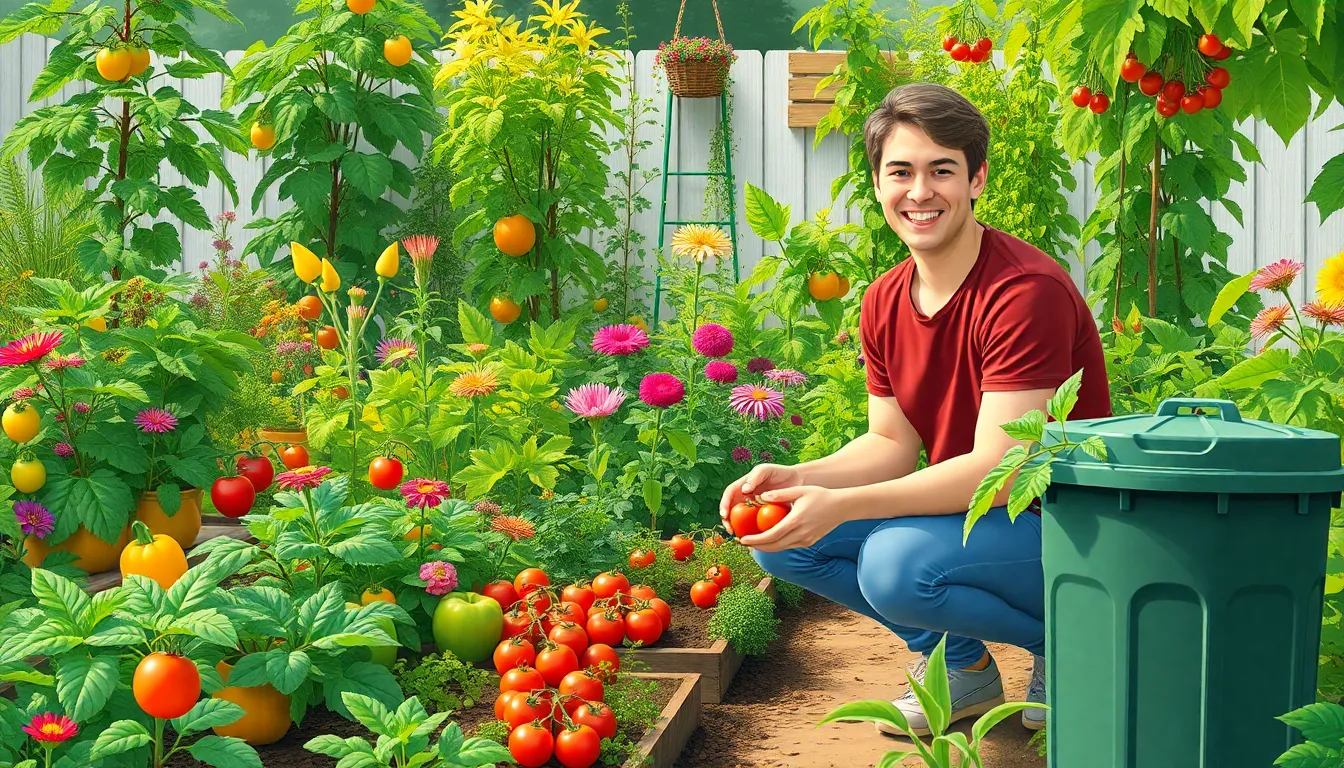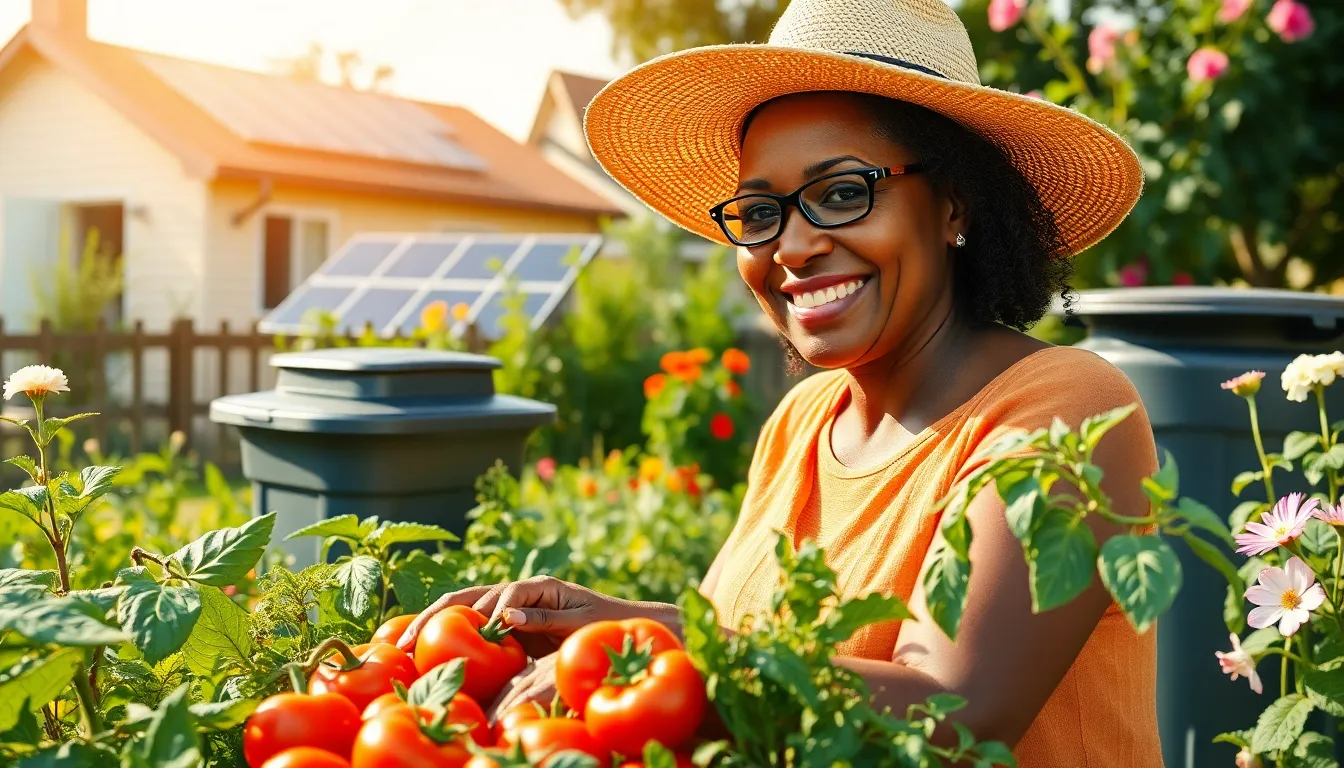Imagine a life where your morning coffee doesn’t come with a side of guilt. Self-sustainable living isn’t just a trend; it’s a lifestyle that empowers individuals to take control of their resources and reduce their carbon footprint. Picture growing your own veggies, harnessing solar energy, and even composting like a pro—who knew being eco-friendly could be this cool?
In a world where convenience often trumps sustainability, embracing self-sufficiency can feel like a radical act. But fear not! It’s not about giving up your creature comforts. Instead, it’s about making smarter choices that benefit both you and the planet. So, if you’re ready to swap plastic for plants and turn your backyard into a mini-eco paradise, buckle up! This journey into self-sustainable living is not just good for the Earth; it might just be the most fun you’ve had since your last Netflix binge.
Table of Contents
ToggleUnderstanding Self Sustainable Living
Self-sustainable living encompasses a lifestyle that prioritizes independence from external resources while minimizing environmental impact. It involves methods such as growing vegetables and fruits in home gardens. Using renewable energy sources, particularly solar power, enhances self-sufficiency and reduces reliance on fossil fuels. Composting serves as an effective technique for recycling organic waste, enriching the soil naturally.
Adopting this lifestyle often leads to financial savings. Many individuals find that home gardening decreases grocery costs over time. Implementing energy-efficient practices results in lower utility bills. Communities practicing self-sustainable living frequently foster a sense of collaboration and shared resources, enhancing social connections.
Physical wellbeing improves in environments where individuals consume fresh produce from their gardens. Health benefits arise from a diet rich in organic fruits and vegetables, free from harmful pesticides. Each small change contributes to a larger impact, showcasing the cumulative effect of collective eco-friendly choices.
Education plays a vital role in self-sustainable living. Workshops and online resources offer guidance on various techniques and practices. By learning sustainable practices, individuals position themselves to make informed decisions about their resource management.
The fulfillment derived from creating a self-sustaining environment is significant. Engaging in activities such as gardening and composting often leads to a greater appreciation for the environment. Individuals exploring this lifestyle may revel in the empowerment it brings, along with the reduced carbon footprint. Embracing self-sustainable living opens doors to a lifestyle marked by responsibility, health, and community involvement.
Benefits of Self Sustainable Living

Self-sustainable living offers significant advantages that enhance individual lifestyles while benefiting the environment. Embracing this lifestyle positively impacts both ecological balance and economic stability.
Environmental Impact
Self-sustainable living reduces an individual’s carbon footprint. Growing food at home minimizes reliance on transportation, cutting down greenhouse gas emissions. It encourages the use of renewable energy sources such as solar power, which decreases dependence on fossil fuels. Composting organic waste enhances soil health by recycling nutrients, preventing landfill waste. Biodiversity values increase as home gardens attract various pollinators, promoting a balanced ecosystem. Sustainable practices often lead to cleaner air and water, improving overall community health.
Economic Savings
Financial benefits accompany self-sustainable living. Growing one’s own food lowers grocery expenses significantly, often by up to 50 percent. Utilizing solar energy reduces utility bills, sometimes resulting in energy savings of 70 percent. Composting not only enriches garden soil but also decreases waste disposal costs. Self-sufficiency in food production can lead to reduced reliance on commercial markets, shielding individuals from price fluctuations. Furthermore, investments in sustainable practices often yield long-term savings, enhancing overall financial stability.
Key Components of Self Sustainable Living
Self-sustainable living encompasses various components that work together to create a balanced and eco-friendly lifestyle. Emphasizing resource independence and harmony with nature, these elements enhance both individual well-being and community dynamics.
Renewable Energy Sources
Solar energy stands out as a primary resource for self-sustainable living. Utilizing solar panels reduces reliance on fossil fuels significantly. Wind turbines also contribute by harnessing natural breezes for electricity. Individuals can expect utility savings of up to 70% through these renewable sources. Geothermal energy and biomass energy offer additional options for heating and electricity generation, promoting efficiency and sustainability. Incorporating multiple energy sources allows for greater resilience and adaptability, minimizing vulnerability to market fluctuations.
Community Involvement
Fostering community involvement enhances the benefits of self-sustainable living. Neighborhood gardens and shared resources cultivate cooperation among residents. Collaboration often leads to shared knowledge and skills, empowering everyone engaged. Participating in local workshops on sustainable practices enriches understanding and builds connections. Through community-supported agriculture programs, individuals can access fresh produce while supporting local farmers. Social networks formed through these initiatives strengthen bonds and encourage a collective commitment to eco-friendly living. Together, communities thrive in a self-sustainable environment, creating lasting impacts both individually and collectively.
Practical Steps to Achieve Self Sustainable Living
Achieving self-sustainable living involves practical actions that anyone can implement. These steps not only foster independence from external resources but also promote environmental well-being.
Gardening and Food Production
Embracing home gardening represents a cornerstone of self-sustainable living. Growing vegetables and herbs provides fresh produce directly from one’s yard. Raised beds or container gardening can maximize limited space while yielding high returns. Utilizing heirloom seeds ensures biodiversity and resilience against pests. Learning companion planting techniques can enhance growth and reduce the need for chemicals. Many individuals report lowering grocery expenses by up to 50% when they cultivate their own food, fueling both sustainability and savings.
Water Conservation Techniques
Implementing smart water conservation techniques plays a crucial role in self-sustainability. Rainwater harvesting systems capture valuable precipitation for garden irrigation. Utilizing drip irrigation efficiently delivers moisture directly to plant roots, cutting down on waste. Greywater recycling enables gentle reuse of water from sinks and showers for landscape maintenance. Native plants require less water, making them ideal for sustainable gardens. Taking these measures can lead to significant reductions in water usage, benefiting both personal resources and the environment.
Challenges and Solutions
Self-sustainable living presents unique challenges alongside its many benefits. Individuals often face difficulties with maintaining consistent energy sources. Finding the right equipment for renewable energy solutions, like solar panels or wind turbines, can be expensive initially. To mitigate costs, researching government incentives and tax credits for renewable energy installations proves helpful.
Access to water also poses significant challenges. Lengthy droughts can affect home gardening efforts. Implementing water conservation techniques, such as rainwater harvesting and drip irrigation, enhances water management efficiency and reduces dependency on external sources. Using greywater recycling systems further assists in maximizing water usage.
Pests and diseases in garden management can lead to crop failures. Employing organic pest management strategies decreases reliance on harmful chemicals and promotes ecological balance. Many individuals turn to community forums and workshops for advice on effective pest control methods.
Transportation is another concern, especially for those living in food deserts. Inadequate access to fresh produce may hinder the pursuit of a self-sustaining lifestyle. Collaborating with local farmers or participating in community-supported agriculture programs addresses this issue by connecting residents to fresh, organic foods directly.
Engaging communities fosters collaboration among like-minded individuals. Social connections amplify knowledge sharing and resource pooling, creating a stronger support network for self-sufficient practices. Hosting neighborhood workshops and skill-sharing events encourages people to learn sustainable techniques together, strengthening community ties.
Addressing these challenges transforms self-sustainable living into an achievable lifestyle. Overcoming obstacles empowers individuals to develop greater resilience while fostering a sense of fulfillment. These solutions enhance not only personal well-being but also the overall health of communities and ecosystems.
Embracing self-sustainable living opens up a world of possibilities for individuals and communities alike. By taking control of their resources and making eco-friendly choices, people can enjoy a fulfilling lifestyle that benefits both their health and the environment. The journey toward sustainability may have its challenges but the rewards far outweigh the obstacles.
From growing fresh produce to harnessing renewable energy, every small step contributes to a larger impact. This lifestyle fosters stronger community connections and promotes a deeper appreciation for nature. As more individuals commit to self-sustainable practices, they not only enhance their own lives but also pave the way for a healthier planet.




